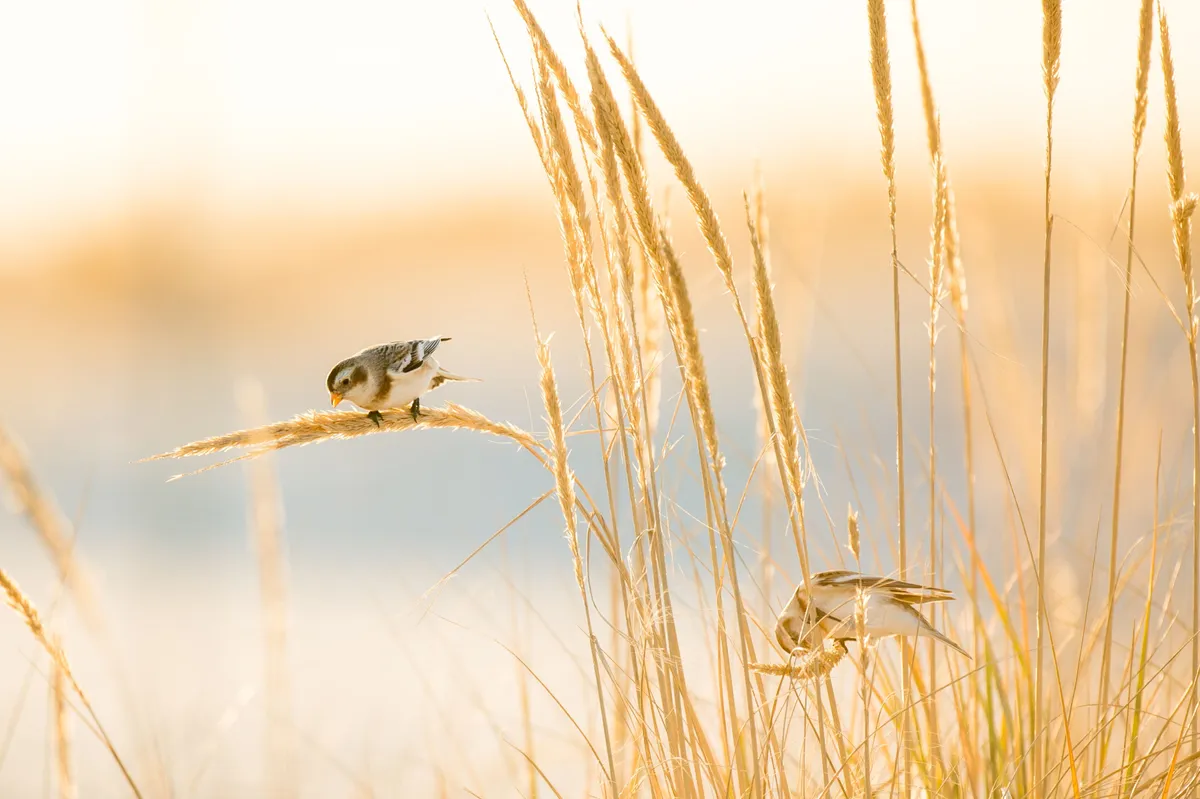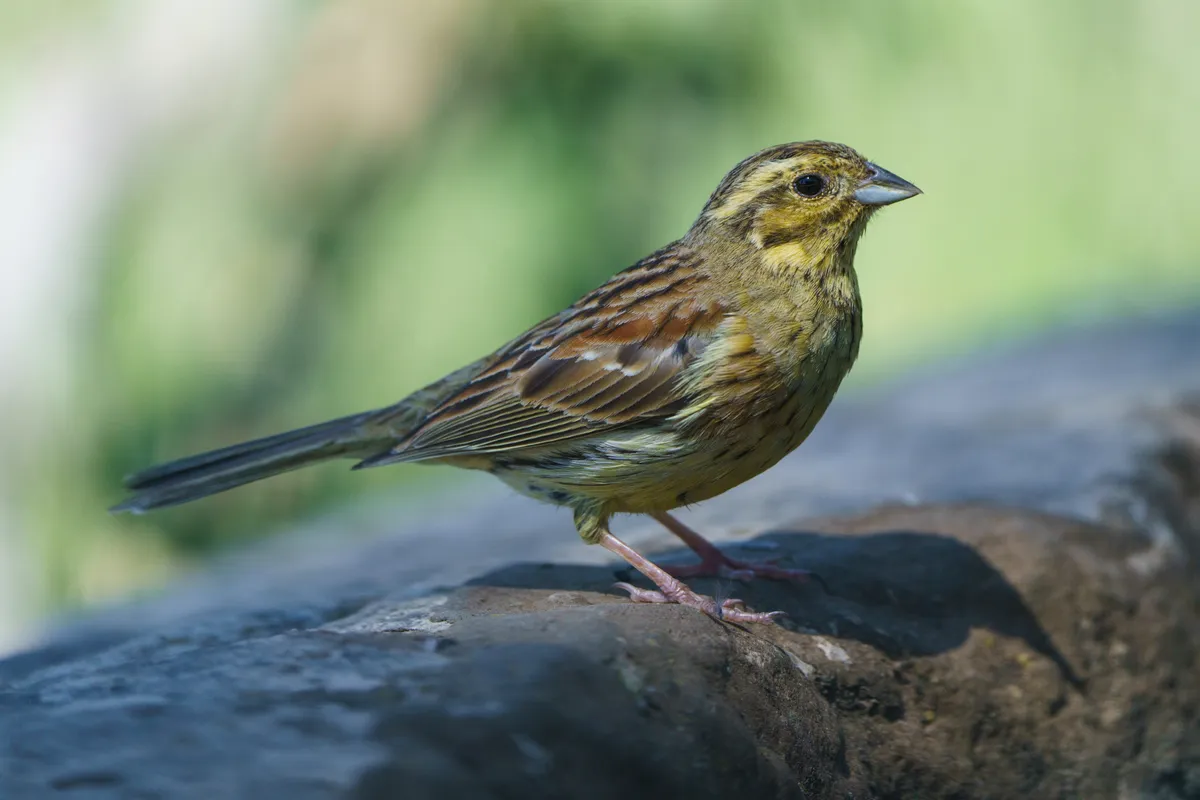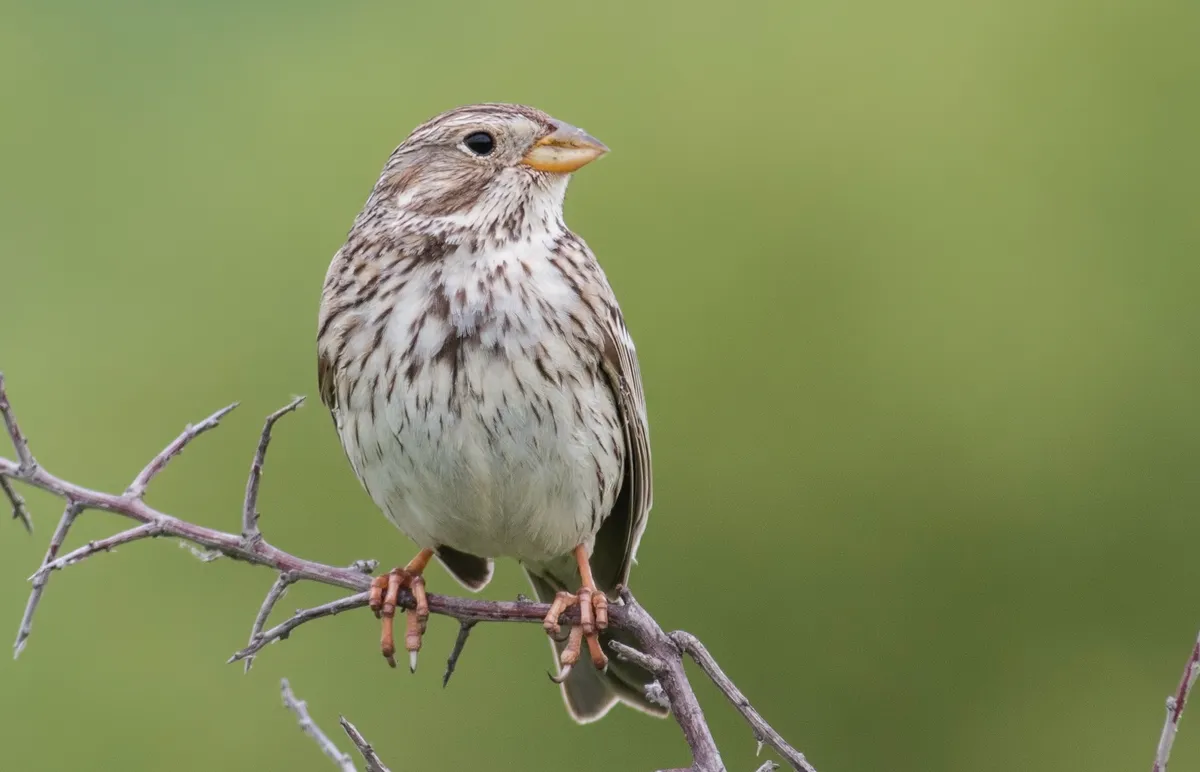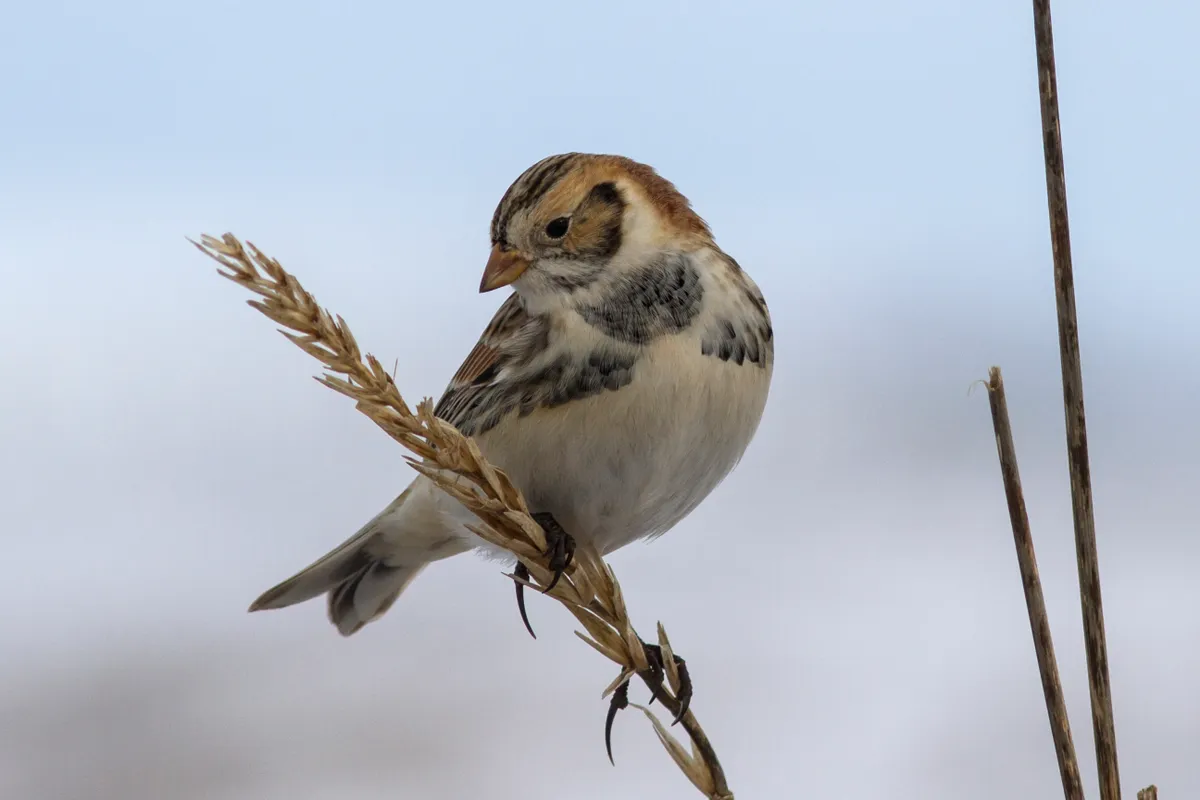Buntings are a group of birds often confused with finches and sparrows. Whilst the latter birds adorn feeders in Britain's gardens, buntings are more likely to keep their distance, mostly residing in wilder habitats, such as farmland, marshes and mountaintops.
Buntings differ from finches by lacking grooves on the inside of the conical bill, and having a bony hump in the roof of the mouth instead, which helps to crush seeds; the cutting edges of the mandibles also curve slightly inwards.
Buntings have a broader diet than finches, with many more insects consumed. They usually nest on or very near the ground, and the young often leave the nest unable to fly properly.
In this guide we reveal which species of bunting can be seen in Britain, including the yellowhammer, reed bunting and cirl bunting.

British buntings guide
Yellowhammer (Emberiza citrinella)

The yellowhammer is an easy bird to identify. There is always some yellow on the plumage, especially around the head, and although the males are the brightest coloured, females also look yellow, albeit streakier.
The males adorn the tops of hedgerows throughout the country in summer, singing a famous ditty that is usually rendered “a little bit of bread and no cheeeese.” The “cheese” section, which is sometimes missed out, sounds rather like the bird is breathing out heavily.
Reed bunting (Emberiza schoeniclus)

Almost everybody seems to dismiss the reed bunting as a sparrow-like bird, but it’s much smarter and streakier, and has an ever-twitching tail, which is white along the edges.
The reed bunting's call is a series of short, somewhat hesitant phrases of no great quality, something like “tsick, twissle, tissick…”. Somebody has delightfully described as it “as a young child counting to three and then forgetting what comes next.”
Cirl bunting (Emberiza cirlus)

The cirl bunting is a difficult bird to tell apart from the yellowhammer. The breeding male has a smart three-striped head – black throat, black crown and black eye-stripe – and the female has a pale streaky head – but otherwise it just looks like a slightly smaller yellowhammer with a smaller, more sunken head.
It has a dry song on a single note, similar to a yellowhammer but without the “cheese”.
Snow bunting (Plectrophenax nivalis)

Snow buntings are easy to identify. They are large songbirds, usually with bold white in the wing. However, there is a variety of plumages to get to grips with, ranging from bold black-and-white to streaky pink-brown.
If you find a flock, listen out for the distinctive, pleasing, rolling trill. The song is a short, crystal-clear melody.
Corn bunting (Emberiza calandra)

The corn bunting can be tricky to identify – it’s brown and streaky and lacking definitive features.
It is noticeably, though, a small rotund bird, a feature exaggerated by the short tail. The bill is broad and yellowish, while the streaks on the breast often coalesce to make a spot.
Listen for the corn bunting's atmospheric song that sounds like the jangling of a bunch of keys.
Lapland bunting (Calcarius lapponicus)

The Lapland bunting has quite a heavy body and long wings. In the winter, in common with skylarks and other buntings, it forages on the ground for seeds. It has a yellow bill, blackish corners to its cheek, reddish shoulders, mottled black on the breast and a brown wing-bat bordered by white.
It has a fabulous, pleasing, slightly glassy song-phrase (“ticky-tick-tick, teu”), though the Lapland bunting is an extraordinarily shy singer and so hard to pick out even if present.
